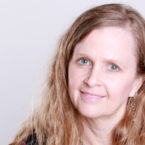Summary
Childhood, adolescent, and young adult cancer survivors are at increased risk of reduced bone mineral density. Clinical practice surveillance guidelines are important for timely diagnosis and treatment of these survivors, which could improve bone mineral density parameters and prevent fragility fractures. Discordances across current late effects guidelines necessitated international harmonisation of recommendations for bone mineral density surveillance. The International Late Effects of Childhood Cancer Guideline Harmonization Group therefore established a panel of 36 experts from ten countries, representing a range of relevant medical specialties. The evidence of risk factors for very low and low bone mineral density and fractures, surveillance modality, timing of bone mineral density surveillance, and treatment of very low and low bone mineral density were evaluated and critically appraised, and harmonised recommendations for childhood, adolescent, and young adult cancer survivors were formulated. We graded the recommendations based on the quality of evidence and balance between potential benefits and harms. Bone mineral density surveillance is recommended for survivors treated with cranial or craniospinal radiotherapy and is reasonable for survivors treated with total body irradiation. Due to insufficient evidence, no recommendation can be formulated for or against bone mineral density surveillance for survivors treated with corticosteroids. This surveillance decision should be made by the survivor and health-care provider together, after careful consideration of the potential harms and benefits and additional risk factors. We recommend to carry out bone mineral density surveillance using dual-energy x-ray absorptiometry at entry into long-term follow-up, and if normal (Z-score > −1), repeat when the survivor is aged 25 years. Between these measurements and thereafter, surveillance should be done as clinically indicated. These recommendations facilitate evidence-based care for childhood, adolescent, and young adult cancer survivors internationally.
Researchers
-
Leanne Ward
Senior Scientist, CHEO Research Institute

